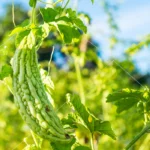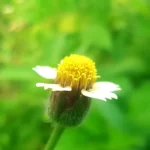Gardening Hack: Turmeric Edition!!!
Avoid using Chemical pesticides and fertilizers which have a lot of hazardous effects on Humans and Animals. That’s the main reason, why we promote the use of natural agents on our Page. Well, Turmeric rhizome contains a substance called Curcumin, which is a very potent antioxidant, has antimicrobial, anti-inflammatory, hepatoprotective effects, and it is very beneficial in boosting the immune system of our body. Turmeric is not only good for the human body but also has some amazing benefits in the garden. You can easily grow turmeric plant from a small piece of turmeric rhizome and harvest a lot of turmeric. Here are the 6 amazing miracles of turmeric in the garden:
- Ant Repellant: Turmeric’s strong odor repels ants. Simply sprinkle turmeric powder around the plants and soil, and it can help get rid of unwanted ants that can carry mealybugs to the growing ends of plants.
- Soil Pest Control: Turmeric can be mixed with soil to get rid of fungal root rot and fungus gnats. Adding 1 tablespoon of turmeric per gallon of soil when making potting mix or whenever repotting the plant can be beneficial. However, adding too much turmeric can negatively affect the beneficial soil microbes. The other method is mixing 1 tablespoon of turmeric in 1 gallon of water or 1 teaspoon per liter of water and watering the affected plant thoroughly.
- Healing Tree Wounds: Turmeric’s natural antiseptic and antibacterial properties can help heal various types of plant wounds. Making a turmeric paste and applying it over the wound or fracture can save the plant from diseases and infections. It can be commonly used after pruning tree branches, cut wounds, grafting, and other similar situations when the plant becomes exposed to external damaging factors.
- Treating Rose Die Back Disease: Rose dieback is a condition commonly affecting rose plants. Applying turmeric paste over the wound after pruning helps prevent the progression of dieback disease. Though pruning the involved stem or branch is the main treatment of dieback disease.
- As a Rooting Agent: Turmeric can increase the chances of rooting plant cuttings due to its anti-microbial and anti-fungal effects. Though not a rooting hormone, turmeric can be used for this purpose.
- Pesticide Spray: Turmeric alone can be used to treat fungal plant diseases and pests like powdery mildew and other fungal spots. However, it is not effective against pests like mealybugs, aphids, mites, and other pests. For minor fungal spots and powdery mildew, 2 teaspoons of turmeric powder can be mixed in 1 liter of water and sprayed on the affected plant. A powerful and broad-spectrum pesticide can be made using turmeric and other natural agents if neem oil is not available in the location. For powdery mildew, 2 teaspoons of turmeric powder, 100 ml of milk, and 2 teaspoons of distilled white vinegar can be mixed in 1 liter of water and sprayed on the affected plant. If pests are resistant to neem oil, 5 to 10 ml neem oil can be mixed with 1 – 2 teaspoons of turmeric powder or garlic in 1 liter of water.
Overall, turmeric is a natural agent that can be very beneficial in gardening. It is easy to grow, readily available, and can be used in various ways to enhance the growth of plants and protect them from diseases and pests. However, it is essential to use turmeric in the right amounts and follow the instructions carefully to avoid any negative impacts on the plants.
In conclusion, using turmeric in your garden can provide several benefits to your plants, such as repelling ants, controlling soil pests, healing plant wounds, treating rose dieback disease, acting as a rooting agent, and serving as a pesticide spray. It’s a natural way to improve your garden’s health and promote a healthier ecosystem.






